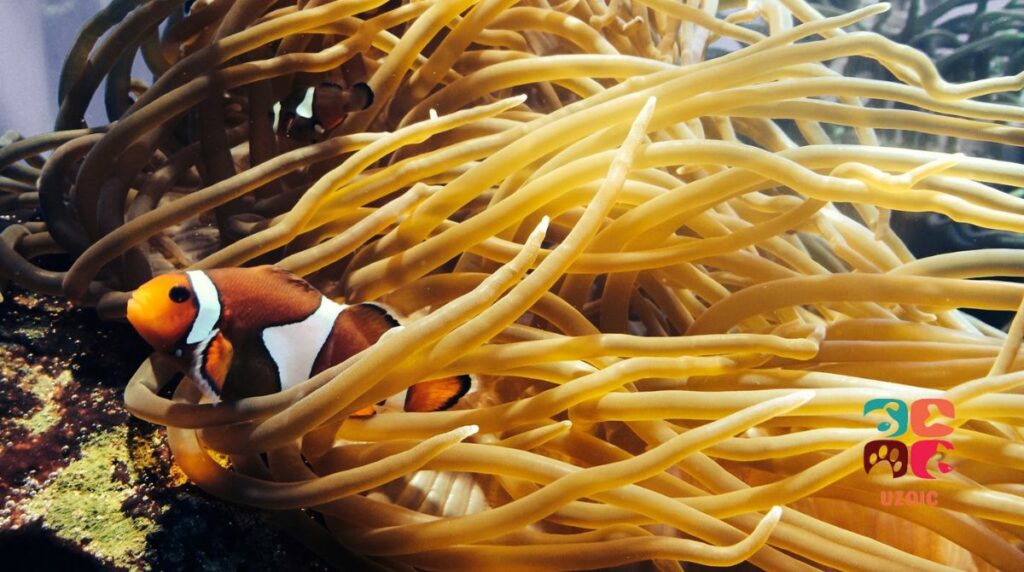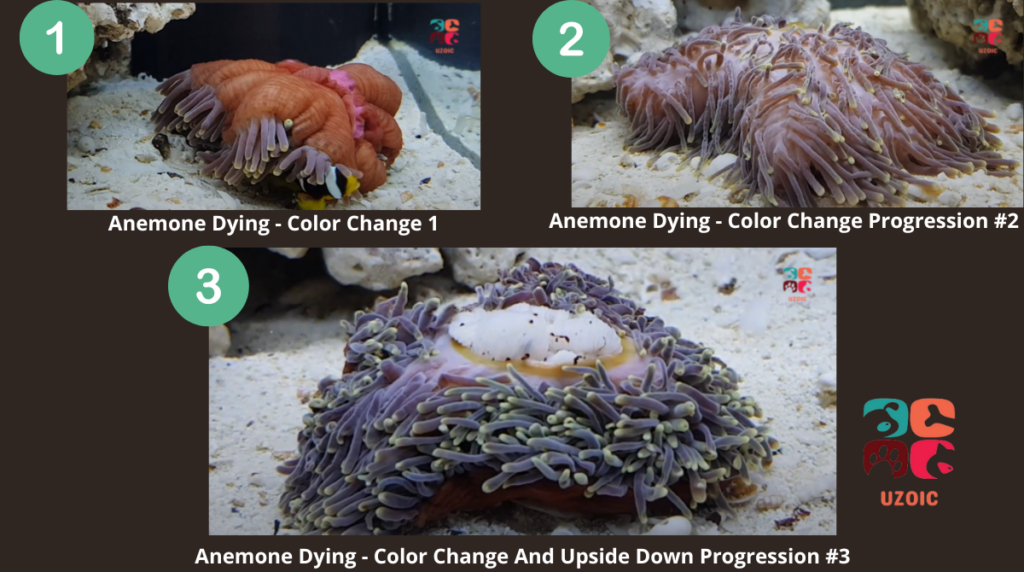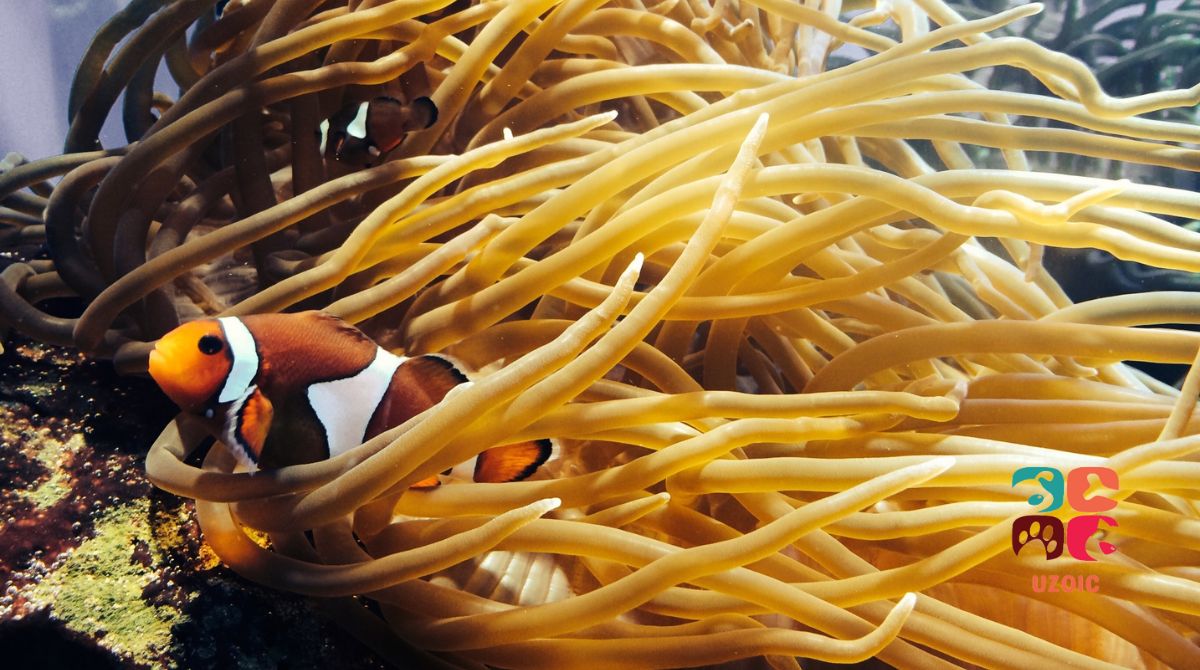Anemones are beautiful creatures that can add a pop of color to any aquarium. They are also relatively easy to care for, but there are some signs you can look for if you think your Anemone is dying. In this blog post, we will discuss the signs of Anemone dying and what you can do to prevent it.
Signs of Anemone dying can include:
- Changing color
- Loss or shriveling of tentacles.
- Shrinking in size.
- Turning upside down
- Bad smell.
It will disintegrate, and the stinking smell will be a tell-tale sign of an Anemone dying. If you notice any of these signs, take action to save your Anemone!
The first sign that your Anemone is dying is a color change. If you notice that your Anemone’s colors are starting to fade or become mottled, this is a sign that it is not doing well. Another sign of anemone death is a decrease in size. If your Anemone starts to shrink, this is a sign that it is not getting the food and nutrients it needs to survive. Finally, if you notice that your Anemone’s tentacles are starting to fall off, this is a sure sign that it is dying.
Anemones are beautiful creatures, but they can be delicate. They can easily be stressed by a change in environment and start to show signs of dying. Some Anemones are known to live as long as eighty years; however, this is in natural conditions where they thrive. In reef aquarium (captivity), the conditions have to be just perfect, or they will start to wither.
Many Anemone owners have been searching for signs of Anemone dying. Sometimes it is not very obvious for owners to understand that their pet Anemone is dying. So, we have put together a list of six sure signs that your Anemone is not doing well and might be dying. We have shown pictures of changing colors in a dying Anemone for your reference.
If you see any of the following signs in your Anemone, take action to save it!
Table of Contents
How Can I Tell If My Anemone Is Dying?

If your Anemone is dying, there are several things you can look for.
- Size: The most common sign of a dying Anemone is that they start to shrink in size. They will become deflated entirely, or their central disc will retract.
- Smell: Another tell-tale sign of your Anemone dying is its smell. Dying or dead Anemone smell terrible, and the odor may be nasty.
- Appearance: If your Anemone is dying, it will show up on its external appearance. They will appear inside out like they have been turned inside out. It will appear to be deflated, and the colors will be faded or mottled. They may start appearing upside down on their mouth and close up. Healthy Anemones may sometime deflate and shrink, but they inflate quickly as well. If you can see your Anemone’s gut, it is indeed dying.
- Behavior: The final sign that your Anemone is dying is a behavior change. Dying Anemones will become lethargic and will not move around as much. They will also detach from their original position and will not move even if moved by the water current.
- Color: The colors of a dying anemone will start to fade or become mottled. Healthy anemones are usually brightly colored, but if your Anemone is losing its color, it may signify that something is wrong.
- Loss of tentacles: If the tentacles or arms of an Anemone start to shrivel or shrink, it is a sure sign of dying. Look out for signs such as arms appearing like a string. Your Anemone might be stressed if it is not receiving enough food or if the water conditions in the tank are not ideal.

What To Do If My Anemone Is Dying?
If you notice any of the above signs, there are several things you can do to try to save your Anemone.
Before starting, ask yourself if you made any changes to the environment of your reef aquarium? For example, did you cycle the tank water? Did anything affect the water parameters?
Check Water Quality
First, check the water quality in your aquarium. Ammonia, Nitrite, and Phosphate levels should be zero, and nitrate levels should be below two ppm. If you notice that the water quality in your aquarium is not up to par, take steps to correct it. We have discussed maintaining optimum water quality for your Anemone in the post here.
In short, test your quality of water. In more than 90% of the cases, the culprit for Anemone dying is water quality, specifically Ammonia, Nitrates, Nitrites, Phosphates, and Salinity. If these aspects of the water are not in the normal range, then your Anemone most likely will not be able to survive for long. They are very sensitive to water conditions when kept in a reef aquarium.
Diet
Next, make sure that your Anemone is getting enough food. Anemones need a diet of small meaty foods, such as Mysis shrimp or Brine shrimp. If you are not feeding your Anemone enough, or if it is not getting the right type of food, this could be causing it to die.
You can also offer them frozen foods such as freeze-dried krill. To learn more about feeding your Anemone, check out our post on the subject here.
Lighting
In addition, check the lighting in your aquarium. Anemones need a moderate amount of light, and too much or too little light can cause them to die. If you are not sure about the lighting in your aquarium, ask a professional for help.
Proper Placement
Finally, make sure that your Anemone is properly placed in your aquarium. Anemones need to be placed in an area with moderate water flow and plenty of room to move around. If your Anemone is not placed correctly, this could be causing it to be stressed and later die.
Temperature
Another factor that can stress your Anemone and cause it to die is temperature. They prefer a temperature between 72-78 degrees Fahrenheit. If the water in your aquarium is too cold or too hot, this could be causing your Anemone to die. Anemones will not be able to survive in temperatures below 70 degrees Fahrenheit and above 80 degrees Fahrenheit. So check the water temperature daily. Try using a digital thermometer for this purpose. It will make your task very easy.
Conclusion
So there you have it! These were some of the most common reasons why anemones die in captivity. By taking steps to correct these problems, you may be able to save your Anemone. However, if your Anemone is already showing signs of dying, it is important to act quickly. The sooner you take action, the better the chances are that you will be able to save your Anemone.
By following the above tips, you can help to prevent your Anemone from dying. If you notice any of the above signs of an Anemone Dying, take action immediately to try to save your Anemone!


